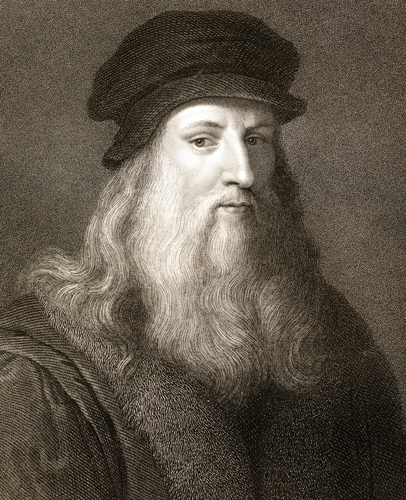Musée du Louvre
One of the world’s most impressive museums, the Louvre contains some 35,000 priceless objects. Built as a fortress by King Philippe-Auguste in 1190, Charles V (1364–80) was the first king to make it his home. In the 16th century François I replaced it with a Renaissance-style palace and founded the royal art collection with 12 paintings from Italy. Revolutionaries opened the collection to the public in 1793. Shortly after, Napoleon renovated the Louvre as a museum.
|
Gallery GuideThe foyer is under the pyramid. Visitors who have tickets enter here or off the rue de Rivoli (passage Richelieu). Alternatively, buy tickets at the Carrousel du Louvre entrance (99 rue de Rivoli) and Porte des Lions. The Sully, Denon and Richelieu wings lead off from the foyer. Painting and sculpture are displayed by country, plus galleries for objets d’art, antiquities, prints and drawings. Don’t miss the temporary shows, contemporary and tribal art (Pavilion des Sessions, Denon). |


|
|
Top 10 Sights
Mona Lisa
Arguably the most famous painting in the world, Leonardo’s portrait of the woman with the enigmatic smile (see Leonardo da Vinci and the Mona Lisa) has been beautifully restored. Visit early or late in the day.

Marly Horses
Coustou’s rearing horses being restrained by horse-tamers were sculpted in 1745 for Louis XIV’s Château de Marly. Replicas stand near the Place de la Concorde.
The Winged Victory of Samothrace
This Hellenistic treasure (3rd–2nd century BC) stands atop a stone ship radiating grace and power. It commemorates a naval triumph at Rhodes.
The Lacemaker
Jan Vermeer’s masterpiece, painted around 1665 gives a simple but beautiful rendering of everyday life and is the highlight of the Louvre’s Dutch collection.
Slaves
Michelangelo sculpted these two slaves (1513–20) for the tomb of Pope Julius II in Rome. The unfinished figures seem to be emerging from their “prisons” of stone.
Medieval Moats
An excavation in the 1980s uncovered the remains of the medieval fortress. You can see the base of the towers and the drawbridge support.
Louvre Collections

French Paintings
This superb collection ranges from the 14th century to 1848 and includes works by such artists as Jean Watteau, Georges de la Tour and JH Fragonard.
French Sculpture
Highlights include the Tomb of Philippe Pot by Antoine le Moiturier, the Marly Horses and works by Pierre Puget in the glass-covered courtyards.
Greek Antiquities
The wondrous art of Ancient Greece here ranges from a Cycladic idol from the third millennium BC to Classical Greek marble statues (c.5th century BC) to Hellenistic works (late 3rd–2nd century BC).
Oriental Antiquities
A stunning collection includes a re-created temple of an Assyrian king and the Codex of Hammurabi (18th century BC), mankind’s oldest written laws.
Italian Sculpture
Highlights of this collection, dating from the early Renaissance, include a 15th-century Madonna and Child by Donatello and Michelangelo’s Slaves .
Dutch Paintings
Rembrandt works take pride of place in this section, along with domestic scenes by Vermeer and portraits by Frans Hals.
Objets d’Art
This collection of ceramics, jewellery and other items spans many countries and centuries.
Islamic Art
An exquisite collection ranging from the 7th century to the Ottoman Empire (14th–19th centuries). Closed for renovation.
|
Leonardo da Vinci and the Mona Lisa
Born in Vinci to a wealthy family, Leonardo da Vinci (1452–1519) first took up an apprenticeship under the Florentine artist Andrea del Verrocchio, then served the Duke of Milan as an architect and military engineer, during which time he painted the acclaimed Last Supper mural (1495). On his return to Florence, to work as architect to Cesare Borgia, he painted his most celebrated portrait, the Mona Lisa (1503–06). It is also known as La Gioconda, allegedly the name of the model’s aristocratic husband, although recent speculation suggests that da Vinci himself could be the subject. The masterpiece, particularly the sitter’s mysterious smile, shows mastery of two techniques: chiaroscuro, the contrast of light and shadow, and sfumato, subtle transitions between colours. It was the artist’s own favourite painting and he took it with him everywhere. In 1516 François I brought them both to France, giving da Vinci the use of a manor house in Amboise in the Loire Valley, where he died three years later. The Mona Lisa is the Renaissance master’s only known surviving work of portraiture.

Leonardo da Vinci A Renaissance man extraordinaire, Leonardo was not only an artist but a sculptor, engineer, architect and scientist. His many achievements included the study of anatomy and aerodynamics.








